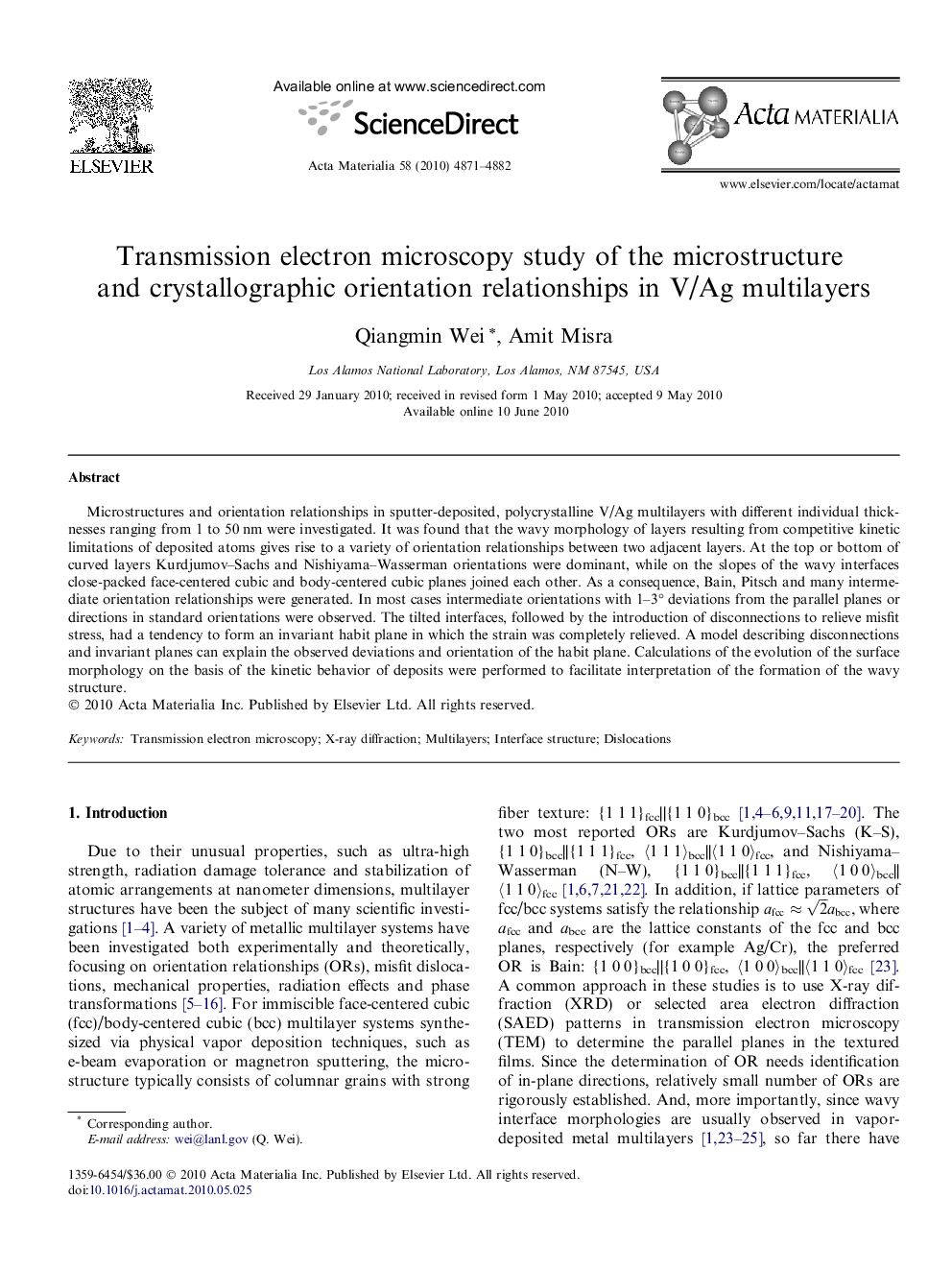| Article ID | Journal | Published Year | Pages | File Type |
|---|---|---|---|---|
| 1447397 | Acta Materialia | 2010 | 12 Pages |
Microstructures and orientation relationships in sputter-deposited, polycrystalline V/Ag multilayers with different individual thicknesses ranging from 1 to 50 nm were investigated. It was found that the wavy morphology of layers resulting from competitive kinetic limitations of deposited atoms gives rise to a variety of orientation relationships between two adjacent layers. At the top or bottom of curved layers Kurdjumov–Sachs and Nishiyama–Wasserman orientations were dominant, while on the slopes of the wavy interfaces close-packed face-centered cubic and body-centered cubic planes joined each other. As a consequence, Bain, Pitsch and many intermediate orientation relationships were generated. In most cases intermediate orientations with 1–3° deviations from the parallel planes or directions in standard orientations were observed. The tilted interfaces, followed by the introduction of disconnections to relieve misfit stress, had a tendency to form an invariant habit plane in which the strain was completely relieved. A model describing disconnections and invariant planes can explain the observed deviations and orientation of the habit plane. Calculations of the evolution of the surface morphology on the basis of the kinetic behavior of deposits were performed to facilitate interpretation of the formation of the wavy structure.
